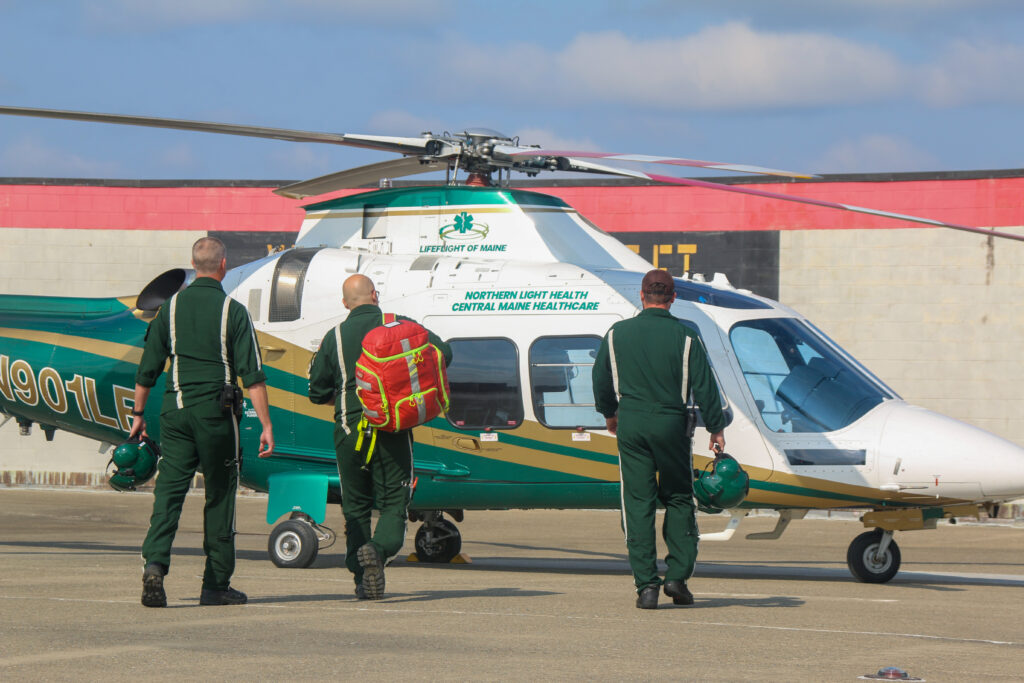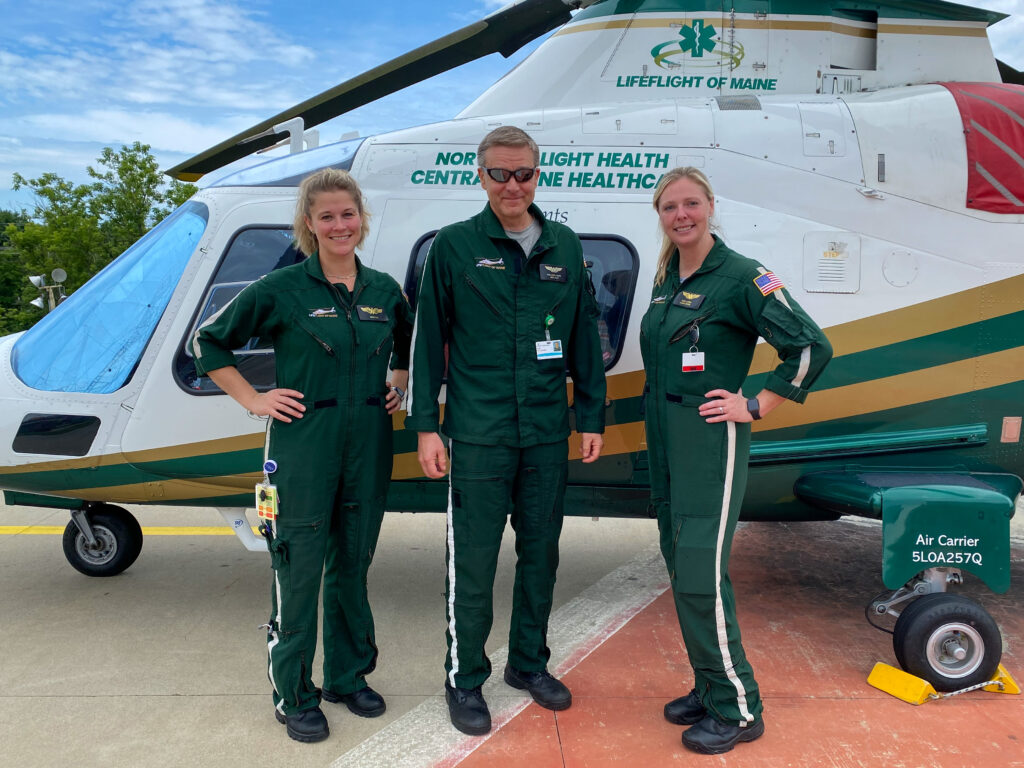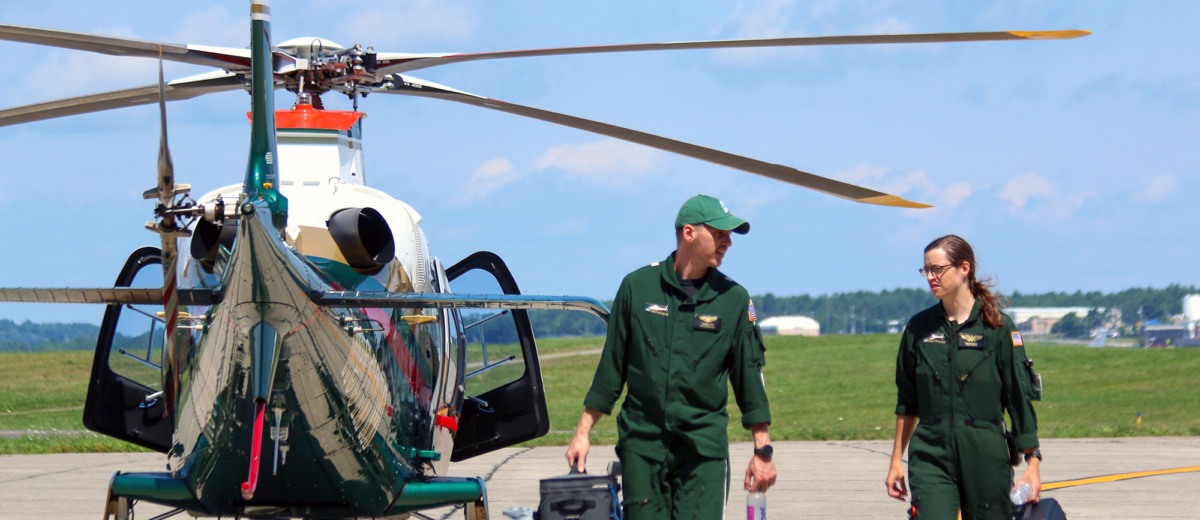A Busy Summer at LifeFlight
While for most Mainers the 4th of July consisted of family, food, and fireworks, LifeFlight of Maine crews had a full day of helping the state’s most critically ill and injured. Crews made 13 transports on Independence Day alone, setting the pace for the rest of the month—and summer—to follow.
“July started off with a bang. From the 4th of July, it just never let up. As soon as we walked in the door, we’d turn around and walk right back out. It was nonstop,” said Mike James, a helicopter pilot based in Bangor.
Melissa Dufault, a flight nurse out of the Lewiston and Sanford bases, agreed.
“It felt like for a few weeks in July you could expect a long and busy day, so you were always prepared for that,” said Melissa. “We would be waiting for the crew from the previous shift to return, and then we would run out with all this equipment to restock the aircraft and take off for another transport. It felt like all aircraft were out all the time.”

The numbers back it up. LifeFlight crews completed 284 transports in the month of July alone. That’s about one transport every 2.6 hours, and a 30 percent increase from the same period in 2023.
“It is very validating to see the numbers. I felt like we were working really hard, and we were trying to do our best and get these calls done, and there’s proof that we did and that we were needed,” says Melissa.
While the number of transports rose, so did the temperatures. Crews faced heat wave conditions for parts of the summer. And, while the forest green jumpsuits are one of the most iconic parts of the job, they can get hot. The suits are made of a flame-resistant fabric, which is important for safety. It also makes them less breathable.
Despite the heat, the sunshine led to good flight conditions for crews this summer. That meant long days and regular overtime for the flight crew. It also meant that many patients got the lifesaving care they needed.
“It’s nice to be able to fly, because if not it turns a thirty-minute flight into a two-hour drive, or a two-hour trip for us into a six-hour transport for the patient,” says Mike. When weather prevents LifeFlight’s aircraft from flying, the medical crew will transport the patient by ground. “Overall, I’d say this summer has been a joy to fly compared to last year.”


